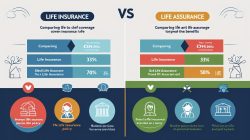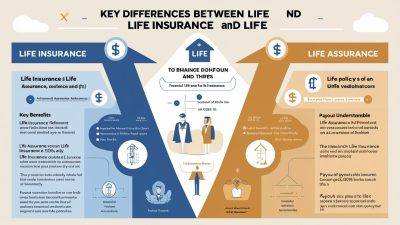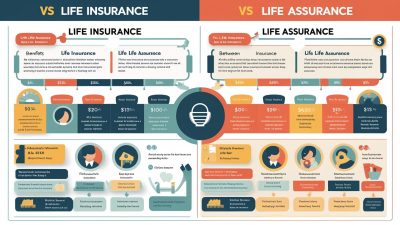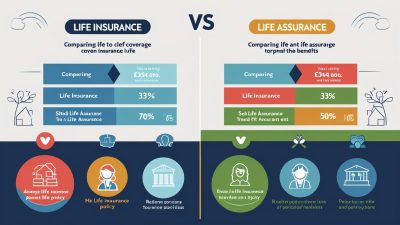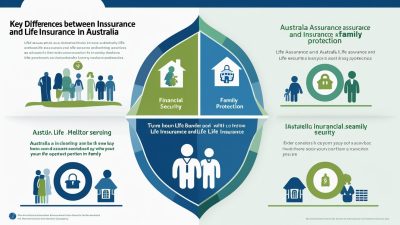Life Insurance Tax Implications in Australia: A Detailed Guide
Bloggerbanyumas.com – Life insurance is a critical financial product for Australians looking to secure the future of their loved ones and ensure that their family is financially protected in the event of their passing. However, understanding the tax implications of life insurance is essential to making informed decisions about your policy. Taxation can have a significant impact on both the premiums you pay and the benefits your beneficiaries receive, making it crucial to understand how life insurance is treated by the Australian Tax Office (ATO).
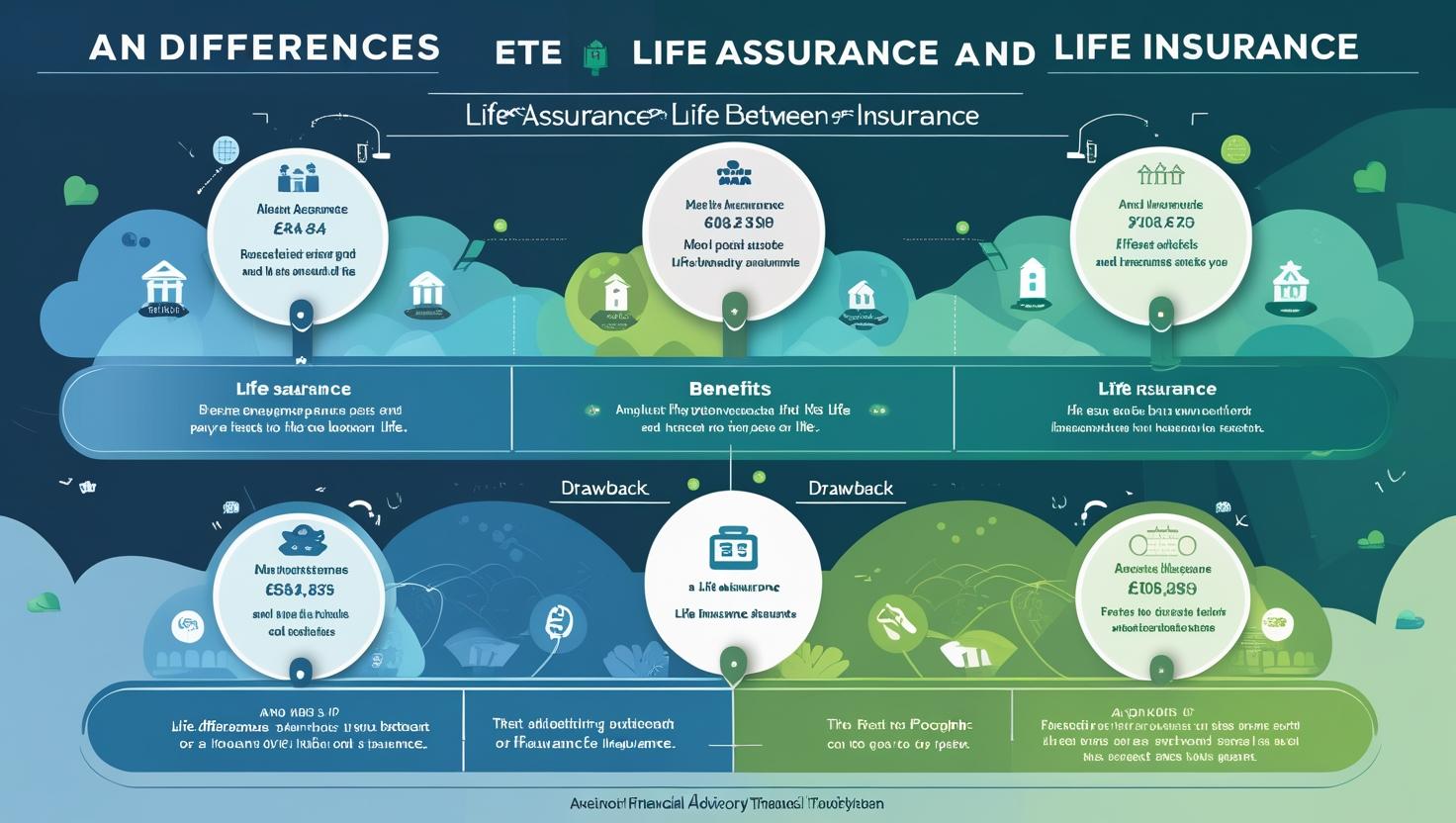
In this comprehensive guide, we will explore the tax implications associated with life insurance in Australia, including how premiums are taxed, the tax treatment of death benefits, and the role of superannuation. Whether you are purchasing life insurance for the first time or reviewing an existing policy, this article will provide you with the detailed information you need to navigate the complexities of life insurance taxation in Australia.
Why Understanding Life Insurance Tax Implications is Important
The tax treatment of life insurance policies can have a significant impact on your financial planning. Whether you are an individual purchasing life insurance to cover personal expenses or a business owner looking to protect employees, knowing how your premiums and benefits will be taxed is essential. Life insurance premiums and payouts are subject to different tax rules, and misunderstanding these rules could lead to unexpected tax liabilities.
Moreover, the way you structure your policy—whether through a personal policy, superannuation, or business-related policy—can greatly influence the amount of tax you pay. Therefore, it’s vital to have a clear understanding of how life insurance policies are taxed in Australia to avoid surprises and make the most out of your life insurance coverage.
The Tax Treatment of Life Insurance Premiums in Australia
Understanding how life insurance premiums are taxed in Australia is a crucial first step for policyholders. Whether or not you can claim tax deductions for your premiums largely depends on how the policy is structured and the purpose of the insurance.
1. Personal Life Insurance Premiums
When you purchase life insurance as an individual, the premiums you pay are typically not tax-deductible. This is the case for most personal life insurance policies, including term life insurance, whole life insurance, and income protection insurance. Since the policy is intended to benefit your beneficiaries, and not directly related to earning income, it is not considered a tax-deductible expense.
- Premiums not tax-deductible: For most personal life insurance policies, including policies covering death, terminal illness, or critical illness, the premiums you pay cannot be claimed as a tax deduction.
- No impact on taxable income: Because premiums are not deductible, they do not reduce your taxable income.
It’s important to keep this in mind when budgeting for your insurance needs. While you will not receive a tax break on your life insurance premiums, having a well-structured policy can still provide invaluable protection for your loved ones in the event of your death or critical illness.
2. Life Insurance through Superannuation
Many Australians choose to hold their life insurance policies through their superannuation funds, which can provide some tax advantages. In fact, paying life insurance premiums via superannuation is a popular choice because it allows policyholders to use their pre-tax super contributions to cover the cost of insurance.
- Tax advantages for premiums: Premiums paid through superannuation are typically paid from pre-tax contributions (concessional contributions), meaning that the premiums are deducted before they are taxed, which can lower your taxable income.
- Limited to certain policies: Life insurance held in super is often limited to basic coverage, such as death, terminal illness, and total and permanent disability (TPD) insurance. Other types of policies, such as income protection, can also be included in super, but the tax treatment may differ.
While holding life insurance through superannuation has the advantage of being more cost-effective due to the pre-tax contributions, there are also some trade-offs. The insurance premiums may reduce the value of your superannuation balance, and in the event of a claim, the death benefits may be paid to your super fund’s trustee rather than directly to your beneficiaries.
3. Business-Related Life Insurance Premiums
If you are a business owner and you purchase life insurance to cover key employees or for buy-sell agreements, the tax treatment of the premiums may differ. Business-related life insurance policies are typically structured to provide financial protection in the event of the death or incapacity of a key person in the business.
- Premiums may be deductible: In some cases, businesses may be able to deduct the cost of life insurance premiums as a business expense, provided the policy is purchased for the benefit of the business. This includes policies that cover key-person insurance or insurance for partners in a business partnership (buy-sell agreements).
- Taxable benefit for employees: If the life insurance is provided as a benefit to employees, the premiums may be considered part of the employee’s salary package, making it subject to fringe benefits tax (FBT).
For businesses, it’s essential to structure life insurance policies carefully to ensure that the tax treatment aligns with the business’s financial goals and compliance requirements. The tax benefits for businesses will depend on how the policy is used and whether the insurance proceeds are paid to the business or to employees.
Tax Treatment of Life Insurance Death Benefits
One of the key areas where life insurance can have a significant tax implication is in the distribution of death benefits. How death benefits are taxed depends on several factors, including whether the beneficiary is a family member, the type of life insurance policy, and whether the proceeds are paid through superannuation.
1. Death Benefits Paid Directly to Beneficiaries
In the majority of cases, life insurance death benefits paid directly to the beneficiaries are tax-free. This applies to personal life insurance policies where the policyholder names individual beneficiaries, such as family members or loved ones.
- Tax-free death benefit: When the death benefit is paid directly to a beneficiary, whether it’s a spouse, child, or other family member, the payout is generally not subject to income tax in Australia.
- Exempt from capital gains tax (CGT): Life insurance death benefits are typically exempt from CGT, meaning that beneficiaries will receive the full payout without any tax liability, regardless of the value of the policy.
This tax-free treatment of death benefits is one of the main reasons why life insurance is considered an effective way to leave a financial legacy for your family or loved ones.
2. Death Benefits Paid Through Superannuation
If the life insurance policy is held within a superannuation fund, the tax treatment of the death benefits can be more complex. The death benefits in this case may be subject to tax depending on the type of beneficiary and the relationship to the deceased.
- Taxable to non-dependents: If the death benefit is paid to a non-dependent beneficiary, such as an adult child or a friend, the payout may be subject to tax. The beneficiary may be required to pay tax at a rate of up to 30%, depending on the components of the death benefit.
- Tax-free to dependents: If the death benefit is paid to a dependent, such as a spouse or minor child, the payout is usually tax-free. The Australian Taxation Office (ATO) defines dependents as those who are financially reliant on the policyholder.
For seniors or individuals with a significant superannuation balance, it’s important to carefully consider whether life insurance should be held within superannuation, as it could have an impact on how the death benefits are taxed.
Superannuation and Life Insurance: Tax Considerations
Superannuation is a critical part of retirement planning for Australians, and life insurance policies are often held within superannuation funds to help reduce the cost of premiums. However, as noted, life insurance held through superannuation comes with additional tax implications that must be considered when structuring a policy.
1. Superannuation Contributions and Life Insurance Premiums
One of the primary tax advantages of holding life insurance through superannuation is that premiums are paid using pre-tax contributions, reducing the taxable income. However, contributions to your super are subject to contribution caps, and excess contributions can attract additional tax penalties.
- Concessional contributions: These are tax-deductible contributions made to your super fund, including employer contributions and salary-sacrificed amounts. These contributions are taxed at a lower rate of 15%, which is beneficial for high-income earners.
- Non-concessional contributions: These are after-tax contributions, and while they are not taxed when paid into your super fund, they count toward your contribution caps. Exceeding the caps could result in additional tax charges.
Holding life insurance within superannuation can be a cost-effective solution for paying premiums, but it’s important to understand how this affects your overall superannuation balance and contribution limits.
2. Tax Treatment of Superannuation Death Benefits
The tax treatment of life insurance payouts held within superannuation is based on the recipient’s relationship to the deceased. This is particularly important for seniors who may have complex family arrangements or substantial superannuation balances.
- Tax-free to dependents: As with non-superannuation life insurance, death benefits paid to a dependent spouse or child are usually tax-free.
- Taxable to non-dependents: If the life insurance proceeds are paid to non-dependents, the tax treatment can be more complicated, with a portion of the payout potentially being taxed at a higher rate.
Given these considerations, seniors should carefully evaluate how their life insurance is structured within superannuation to minimize any tax liabilities for their beneficiaries.
Key Takeaways: Life Insurance and Tax in Australia
Navigating the tax implications of life insurance in Australia can be complex, but understanding how premiums and death benefits are taxed can help you make informed decisions. Whether you are looking to purchase life insurance for the first time, restructure an existing policy, or plan for your future, understanding the following key points will guide your choices:
- Premiums paid for personal life insurance are generally not tax-deductible.
- Life insurance premiums paid through superannuation may provide tax advantages by using pre-tax contributions.
- Death benefits paid directly to beneficiaries are typically tax-free, but death benefits paid through superannuation may be subject to tax, depending on the beneficiary’s relationship to the deceased.
- Superannuation policies have unique tax considerations that must be understood to ensure that life insurance benefits are structured in the most tax-efficient way.
By carefully considering the tax implications of life insurance policies, seniors can make more informed decisions about how to protect their family’s financial future while minimizing their tax liabilities. When in doubt, seeking professional financial advice can help you tailor your life insurance strategy to suit your personal needs and goals.




